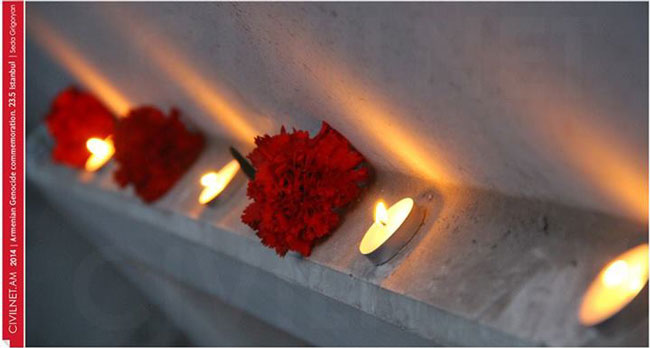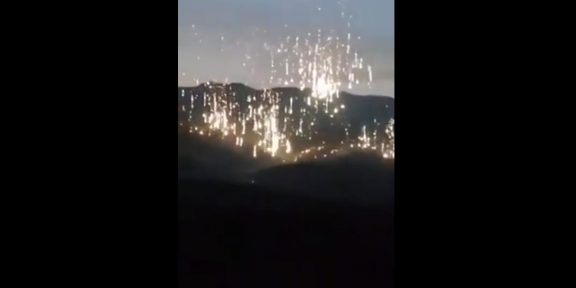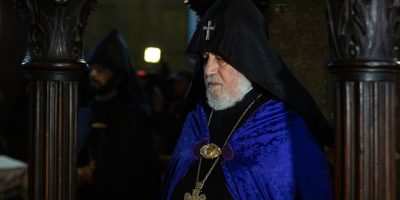Ayse
Ayse rushed breathless into the cafe. We were sitting in Istanbul’s Tophane district with Silvina Der-Megeurditchian, an artist whose exhibition, “A Memory Without a Place” was on display at Depo, a former tobacco warehouse transformed to a special platform for cross-cultural collaborations. When Ayse and Silvina saw each other, they embraced warmly and began talking about past encounters. We sat in silence listening to their quick yet familiar conversation. Silvina introduced us. When Ayse found out we worked for CivilNet, her eyes widened, a slow smile spread across her face, she extended her arms and asked if she could hug us. A bit startled and very much pleased, we willingly fell into her embrace.
She sat down at our table, clasped her hands and stared at us for a few seconds and said, “May I ask where your forefathers were from?” A bit stunned at the unexpected question, we began to list the cities and histories that were lost to us – Alashkert, Urfa, Marash, Musa Ler… She sighed heavily, placed her hands on her chest, closed her large almond-shaped eyes and said, “I am so sorry.” Rendered speechless, we sat frozen in our seats, unable to overcome the feeling of bewilderment. It was jolting because we were in Istanbul and the person offering an apology was a Turkish woman we had never met. She went on, “Please know that you are not guests here, this is your country too.”
This was to be the beginning of a string of encounters and experiences that has no beginning and no end.
* * *
Vignette 2
April 23 – Silent Vigil in Sisli
The Osmanbey Metro station is located near a busy intersection in Istanbul’s Sisli district. Our apartment was a five-minute walk from the station. On the evening of April 23, the Peoples’ Democratic Party or HDP had announced that they were going to be holding a silent vigil to commemorate the 99th anniversary of the Armenian Genocide near Osmanbey. The sky was clear and there was a cool breeze blowing as we walked toward the station. No expectations, very little anticipation.
Before we reached the metro station, we could hear the melodious sounds of Sari Gelin, one of Hrant Dink’s favorite songs, playing. We began walking just a little bit faster. My heart started to beat just a little quicker. When we arrived, we saw a group of people sitting on the pavement, in front of them was a poster with the photos of murdered Armenian intellectuals, strewn with red carnations and candles. I just stood there at first. There was a quiet dignity in the way these Turks, Kurds and Armenians were sitting, almost expressionless on the ground. It was a powerful scene. Then, as if on cue, they stood up and began picking up the flowers, then the candles, then the poster, a banner appeared which said Recognize the Armenian Genocide, and then the participants began walking — where to, I didn’t know.
We walked with them, lost in a trance. Someone said that this was the first time that a march through the streets of Istanbul asking people not to forget the Armenian Genocide was taking place. We turned a corner and began walking down another street. A young man in front of me suddenly walked up to a residential building, took out a can of spray paint and began to write a name on the wall – Krikor Zohrab Buradaydi (Krikor Zohrab was here). I stood transfixed as a woman approached the building and placed candles on a ledge below the writing as another woman placed red carnations. I stood back as the march continued. I turned into a doorway, covered my face and wept as familiar hands held me while I let go of my grief and stupor and disbelief.
* * *
Vignette 3
April 24 – Haydarpasa Train Station
We woke up very early on April 24 to head out to Haydarpasa Train Station. Our friend Burcu came to our apartment. She was going to be with us, helping and assisting us as we tried to make sure that we covered all the events scheduled that day commemorating the 99th anniversary of the Genocide. We had to catch a ferry to get to Haydarpasa, on the other side of the Bosphorus in the Kadikoy district of Istanbul. Catch is exactly what we did – barely making it on board before the ferry closed its doors; we rushed in, giggling like little girls as we tried to catch our breath.
We ordered tea and sat down to enjoy the view. In the distance, we could see Haydarpasa, a beautiful neo-classical structure built in the early years of the 20th century. As we got closer, the significance of the location for the commemoration began bearing down on us. Haydarpasa has a particular significance because it was where the 250 Armenian intellectuals were brought by ferry on April 24, 1915. From there, they were sent to different locales, the overwhelming majority murdered and never to be seen again.
When we reached the train station, organizers were already there. Again the silent vigil at first, again the photos of the intellectuals and red carnations. I can’t remember if music was playing. Then we saw Sevag Balikci’s parents arrive. Their son, too, was murdered on April 24, but in 2011, while serving in the Turkish armed forces. They held a photo of Sevag. Several speeches were made as dozens of media outlets — mostly Turkish — tried to capture the mood in the air; it wasn’t possible. One had to be there physically to sense it. After the speeches, participants walked up to the boardwalk, and threw red carnations into the rushing Bosphorus. I stood there watching the flowers floating in the dark, cold water as the current pushed them away until they disappeared.
* * *
Vignette 4
April 24 – Silent Vigil on Istiklal Avenue
After the Gezi Park riots of last year, Turkish authorities banned protests and rallies in Taksim Square. This year, the silent vigil for the Genocide was relocated to Istiklal Avenue, a major pedestrian road in the heart of Istanbul.
When our crew arrived, hundreds had already assembled. Again Armenian music was playing. There was no room to move. No way to work. Our cameraman tried to squeeze in and finally managed to find a spot from where he could film the scene. I was being pushed back and forth with the surging crowd. I couldn’t stop to try and absorb what I was witnessing. Frustrated and at a loss, I stood for a few minutes, discombobulated. Then I saw Cigdem. She took my hand and dragged me through the hundreds of people standing to watch the vigil. She suddenly stopped, turned around and told me to sit. I was protesting that I needed to find people to interview, I needed to get my job done. She pushed me down to the pavement.
Finding myself with no choice, I too sat with hundreds of Turks and Kurds and Armenians on Istiklal. My mind was still racing when suddenly, like a strong wave crashing against a rocky shoreline, I heard the deep timbre of Komitas Vardapet’s voice. I looked up to the skies, and then across the countless heads of people, holding up photos of murdered Armenians in their hands and it finally began to sink in. I was in Turkey, surrounded by Turks, on April 24 commemorating, remembering, demanding…Could I have imagined that I would be here almost 40 years after I read the word atrocity for the first time, a word I didn’t understand, a word I had looked up in a dictionary? As any reporter worth her salt would do, I took out my phone and tweeted, “Right now I am a survivor of the Armenian Genocide and not a reporter, sitting on Istiklal in Istanbul.”
















